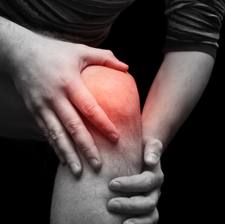 When exposed to sudden forces or twisting movements, the knee can sustain damage to ligaments or cartilage. However a common “injury” or pain which develops gradually is Patello-Femoral pain or pain behind the kneecap.
When exposed to sudden forces or twisting movements, the knee can sustain damage to ligaments or cartilage. However a common “injury” or pain which develops gradually is Patello-Femoral pain or pain behind the kneecap.
Also known as Chondro-Malacia Patella, this problem quite often comes on gradually as a result of a muscle imbalance, predominantly weakness of the VMO (inner quad muscle) and excess tightness of the lateral structures of the thigh and hip (namely ITB, TFL and gluteal muscles).
Poor foot mechanics are the culprit
This imbalance can occur due to poor foot mechanics, overuse or excessive loading such as stairs, hill training etc. This also happens in younger patients during growth spurts where the long bones grow quickly and leave the remaining muscles behind. This condition is common in children from 12-16yrs old, especially if playing sports involving sudden changes in direction and jumping eg netball, basketball, soccer, athletics etc. In the adult it can often result from inadequate stretching of the gluteal and TFL muscles (check with your trainer for these).
Treatment and management of the problem will help
Once this condition has been diagnosed, treatment and management usually involves a stretching program to target the above muscles, deep tissue release work to loosen these muscles and Physio’s will often strap the kneecap to help it track in it’s groove. This often helps reduce pain to allow the VMO muscle to be strengthened without aggravating the pain further. The patient is taught to strap the knee independently so they can continue their training and rehab program.
In the early stages of Patello-Femoral Syndrome the soreness behind the kneecap reduces with exercise and comes on at times when the knee is resting in a bent position such as long trips in the car or sitting in the movies (hence it being known as “Movie goers Knee”).
